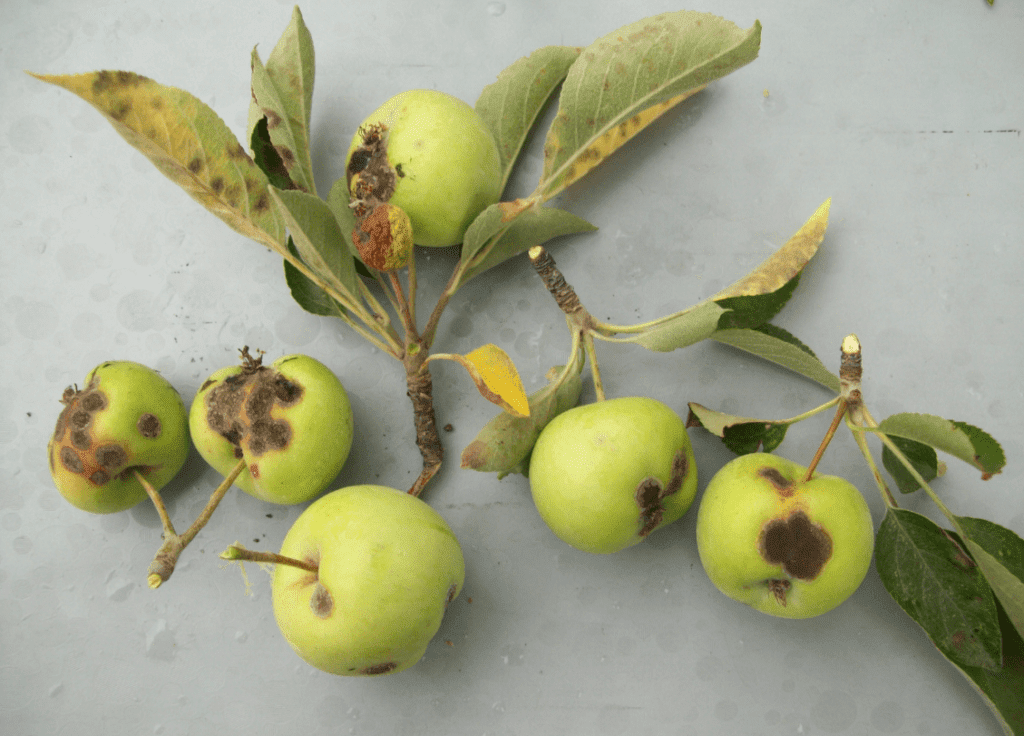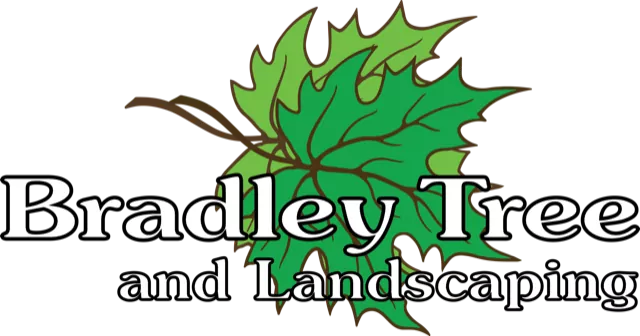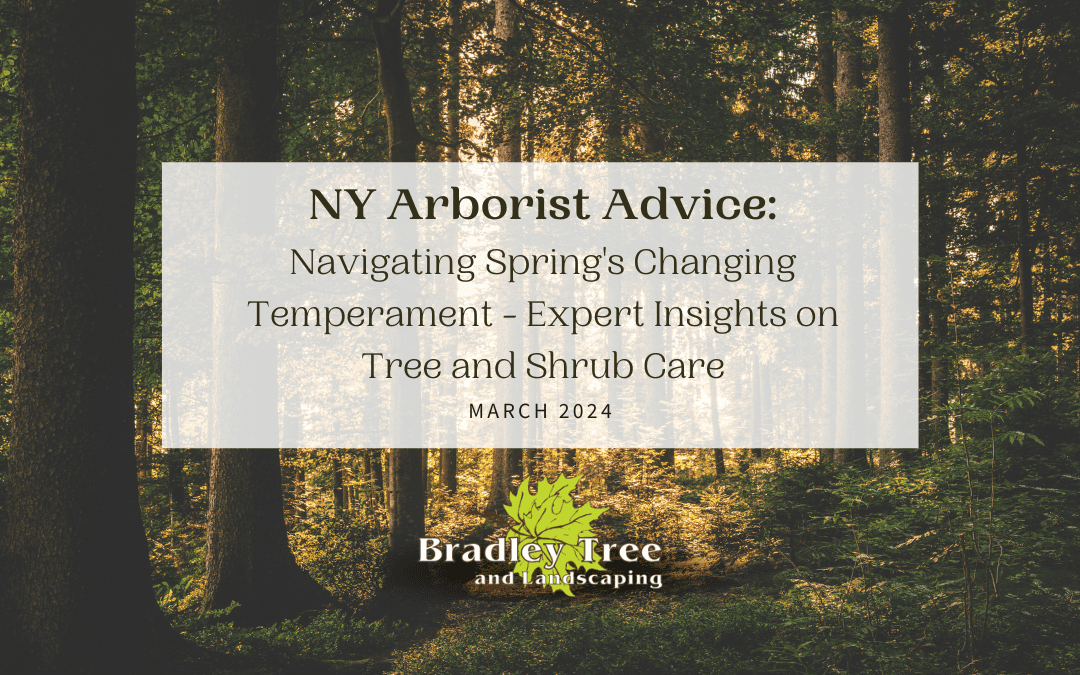Navigating Spring’s Changing Temperament
Hello and welcome back to the Bradley Trees blog, where we go to great heights to please and inform you. We cover various topics in the professional tree care field, from tree trimming and pruning, to how-to’s, invasive insect identifications, to the varying kinds of native trees to the Buffalo NY region.
Imagine the scene: the ground, warmed by unseasonably sunny days, sends a signal to the trees. “It’s time,” the earth whispers, and the roots, eager after a long winter’s rest, begin their work. Sap stirs, moving with purpose through the tree, a liquid life force journeying toward the branches. It’s a beautiful, almost magical process, but this year, it’s happening a tad too soon. As this premature sap flows, it risks freezing within the stems on colder nights, leading to cracks and dead areas under the bark; a silent distress we may not notice until it’s too late.
As the warmth of spring teasingly beckons, it’s not just us humans who are tricked into shedding our winter layers prematurely. Our arboreal and shrub companions, too, are coaxed into believing spring has fully sprung, setting off a series of reactions that could spell trouble for their health and vitality. Let’s delve into the anticipated spring issues due to the warm weather and other pivotal spring considerations for our cherished trees and shrubs.
The Deceptive Warmth of Early Spring
The allure of early spring warmth can mislead trees and shrubs into a false sense of seasonal change. This warmth isn’t merely an atmospheric tease but extends deep into the ground, stirring the root systems into action. As a result, sap begins its upward journey, vitalizing the tree from root to canopy. However, this premature awakening can have dire consequences. Should the sap freeze within the stems, the resultant expansion can cause cracks and dead zones beneath the bark—a silent yet significant injury to the tree’s structure.
This warm spell can fool protective buds into unfurling their leaves too soon. These young, tender leaves, when met with a sudden frost, face a cruel fate, freezing and eventually falling off. This not only wastes the tree’s stored energy, meant for the season’s growth, but also weakens the tree, resulting in less dense canopies and smaller foliage.
The Self-Preservation Response of Trees
In an almost heroic attempt at self-preservation, stressed trees may produce an abundance of seeds, a natural bid to ensure the continuation of their species. This survival mode, while admirable, further drains the tree’s reserves. Addressing this requires a thoughtful approach. Such as supplementing trees with the necessary nutrients through fertilization, providing ample water, and possibly reducing canopy mass to lessen the tree’s maintenance burden.
The Dual Threat: Insects and Fungal Diseases
Warm and wet springs are a harbinger for another form of trouble—increased activity of insects and fungal diseases. The absence of a deep winter freeze allows a higher survival rate for these pests and pathogens, lying in wait to prey on already stressed trees. This scenario underscores the importance of early and proactive plant healthcare, ideally administered by a certified arborist with spray application expertise. Remember, early detection and prevention can save a tree from decline beyond rescue.
Invasive insects are some of the most dangerous, since our local trees aren’t as protected against them, and they might already be weakened from the rapidly changing weather. We have a long series of posts on invasive insects in WNY for you to check out!
A Special Note on Fruit Trees
Fruit trees, like apples and peaches, are especially vulnerable to erratic spring weather. For young apple trees, covering them during frosts might offer some protection, though larger trees will rely on robust plant health care programs to enhance their vigor and resilience against weather-induced stresses.
Unlike most other plants, peach trees need to be sprayed on a warm day before bud break to prevent peach leaf curl before the growing season starts. Timing is always difficult with these sprays. The current weather gives our ISA-certified arborists who are certified spray applicators a leg up on these applications.

Spring: A Time for Pruning and Planting
Spring is an opportune time for both pruning and planting. Certain trees and shrubs thrive with spring pruning, while others are best pruned post-flowering to preserve their blossoms. Securing a spot on the pruning schedule early is crucial for timing these interventions for optimal plant health.
Similarly, spring planting offers the joy of seeing your new trees or shrubs settle in before summer’s full embrace. Early planning ensures access to the best selection of seasonal plants and timely installation, maximizing your enjoyment of these new additions throughout Western New York’s cherished warm seasons.
We talked about a few things that you need to be on the lookout for last March. Remember to check it out, and if you see any of those 10 things to get in touch! And if you need a basic guide on what home pruning you can do, we have you covered. Otherwise, don’t hesitate to call the best ISA-Certified Arborists for your spring tree pruning services!
Embracing Spring with Knowledge and Care
As we navigate the changes of spring, armed with insight and foresight, we can ensure our green companions not only survive but thrive. Whether it’s through strategic care, timely interventions, or simply understanding the nuanced needs of our trees and shrubs, every action we take brings us closer to preserving the verdant legacy of our landscapes. Let’s step into spring with a commitment to nurturing our natural surroundings, guided by expertise and a profound respect for the life cycles of our plant allies.
Trust Your Trees to our Expert Buffalo Arborists!
Remember, our most educated customers are our best customers! Here at Bradley, tree education so that homeowners know how to preserve their gentle giant neighbors is among the most important work we do.
We’ve been in business for 40 years, proudly serving the Buffalo area and WNY as a whole since the 1980s. Our services include professional tree care, tree pruning, trimming and removal, seasonal plant care and landscaping, tree disease treatment, and more!
Don’t forget to stay up to date with your favorite Buffalo arborists by following us on our blog and on Facebook, Instagram, and YouTube! If you need an ISA-certified arborist or a consultation, feel free to reach out by calling us at 716.916.2193 or by visiting our convenient contact form.

